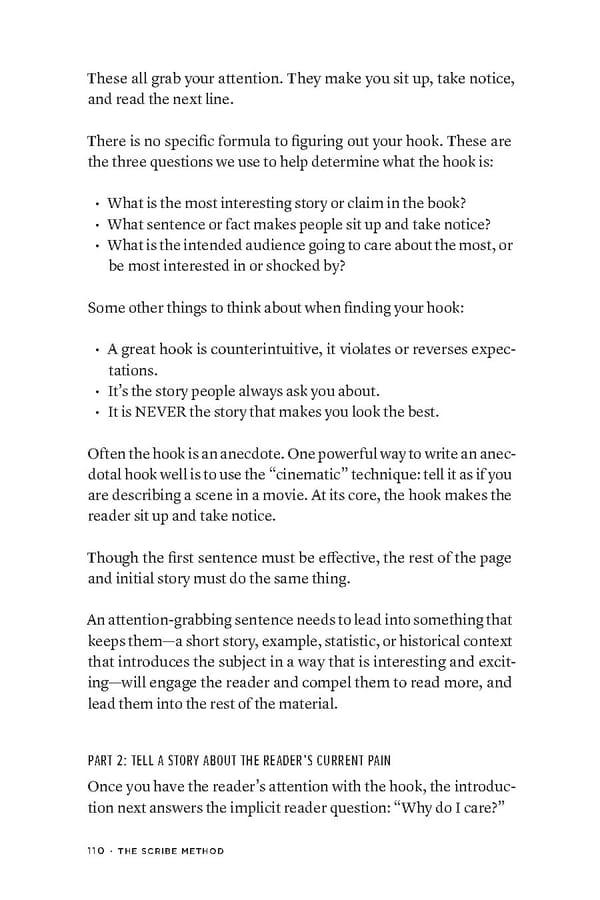These all grab your attention. They make you sit up, take notice, and read the next line. There is no specific formula to figuring out your hook. These are the three questions we use to help determine what the hook is: • What is the most interesting story or claim in the book? • What sentence or fact makes people sit up and take notice? • What is the intended audience going to care about the most, or be most interested in or shocked by? Some other things to think about when finding your hook: • A great hook is counterintuitive, it violates or reverses expec- tations. • It’s the story people always ask you about. • It is NEVER the story that makes you look the best. Often the hook is an anecdote. One powerful way to write an anec- dotal hook well is to use the “cinematic” technique: tell it as if you are describing a scene in a movie. At its core, the hook makes the reader sit up and take notice. Though the first sentence must be effective, the rest of the page and initial story must do the same thing. An attention-grabbing sentence needs to lead into something that keeps them—a short story, example, statistic, or historical context that introduces the subject in a way that is interesting and excit- ing—will engage the reader and compel them to read more, and lead them into the rest of the material. PART 2: TELL A STORY ABOUT THE READER’S CURRENT PAIN Once you have the reader’s attention with the hook, the introduc- tion next answers the implicit reader question: “Why do I care?” 110 · ThE SCriBE METhOD
 The Scribe Method by Tucker Max Page 109 Page 111
The Scribe Method by Tucker Max Page 109 Page 111